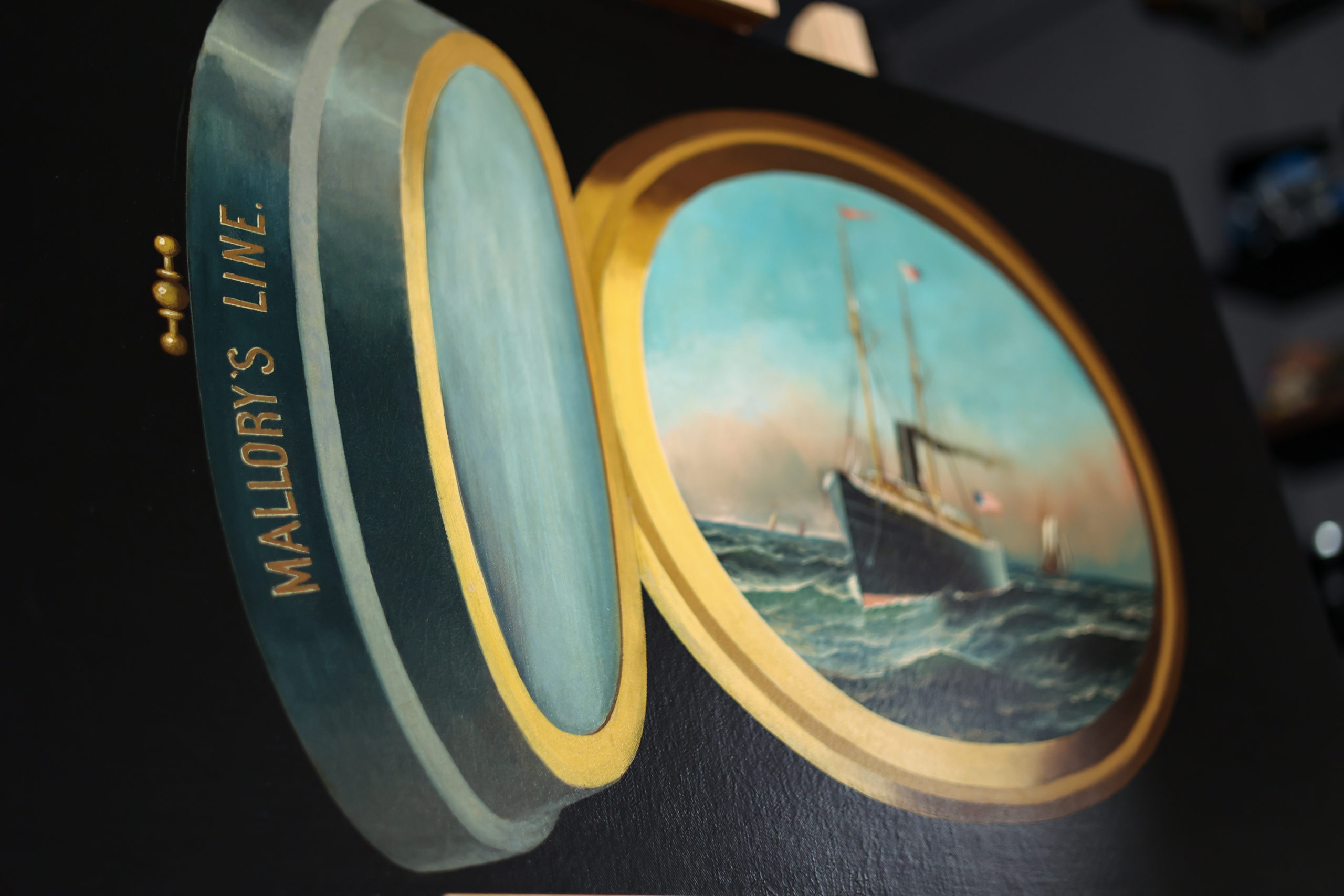
In the darkness of a black canvas, a faint glimmer of light peeks through a circular opening before you. You approach it, feeling for the small brass handle – the metal is cool to the touch. The door is heavier than anticipated and creaks as you pull it open, revealing an unbelievable scene. You peer through this apparent porthole, wondering if instead it’s a portal to another place or time because suddenly you hear the roar of the sea on a blue skied, blustery day, and feel the warm sunlight beaming through this opening. But more shockingly you see a ship steaming straight towards you. Do you shut the door and retreat from this “twilight zone”-esque experience or do you keep looking further and deeper through this opening to join the world beyond the portal?
A Snap Judgement
At many times in our lives, things are very rarely what they seem to be. We tend to look around, quickly form an opinion, and move on. But all that truly gives us is an often inaccurate version of reality. But if we stop and take the time to observe and learn, we can see the bigger picture. I have to admit, when I was first introduced to the world of maritime art, I was quick to judge.
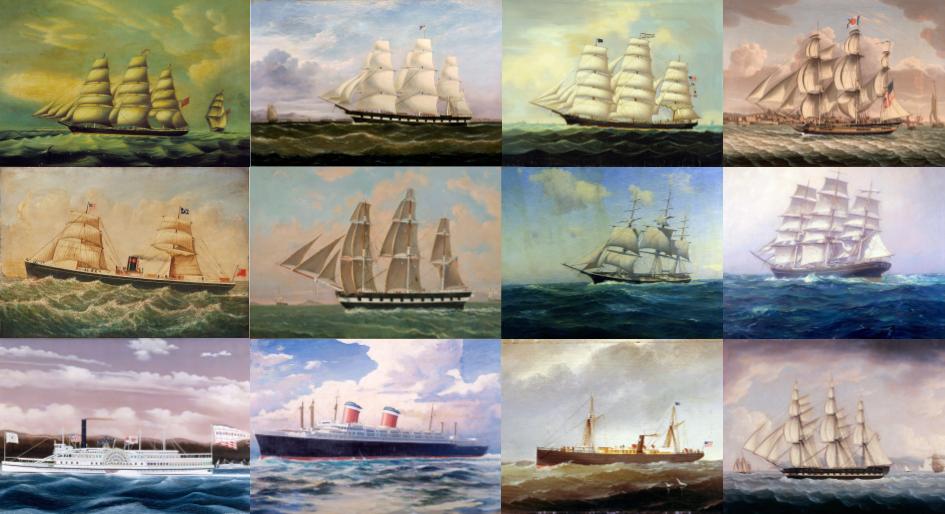
I saw ship portrait after ship portrait and wrote off the genre as being almost entirely comprised of the broadside of a vessel. However, as I dove deeper into our painting collection, I found that my judgment was entirely based on my own preconceived notions. And this was a moment of opportunity. One to open the door and explore this whole world before me.
And what an incredible world it is.
The Ship Portraitist
From this universe of maritime art we get this intriguing work by famed ship portrait painter, Antonio Jacobsen. Now, while Jacobsen’s ship portraits are gorgeous – sleek, crisp, accurate, and skillfully painted, they, too, were some that led to my snap judgment about this genre. That’s likely because of their sheer quantity and repetitive style.
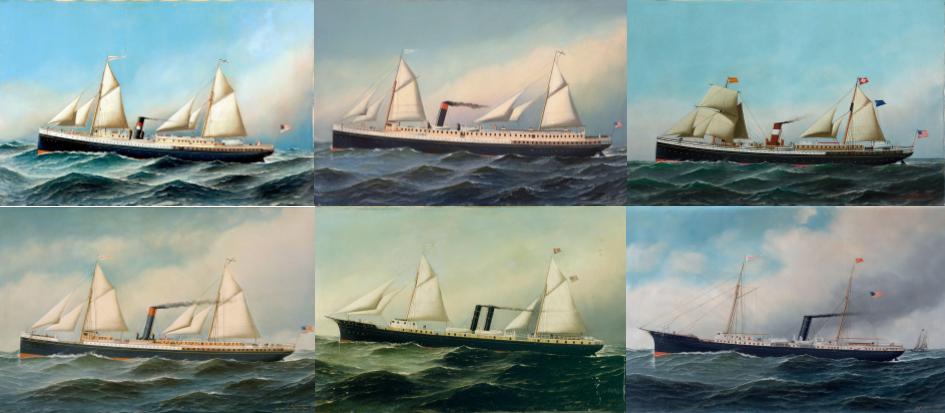
Jacobsen emigrated to America from Denmark in 1873, and throughout his lifetime he completed thousands of painted works and sketched thousands more. He was capable of near-mechanical output, painting some of his works in mere hours. Most of his pieces are very literal, with everything laid out in an immediately understandable way.
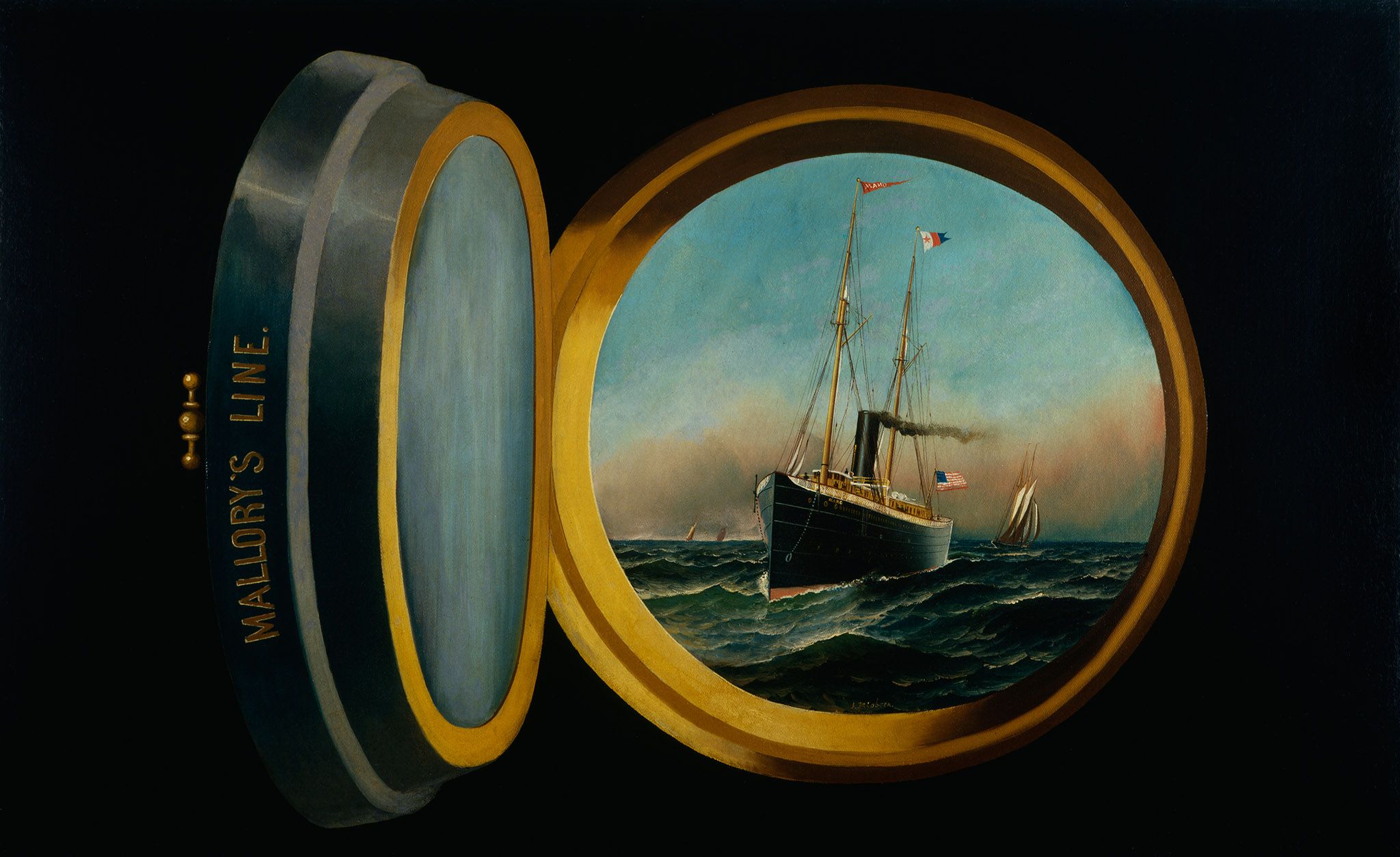
But this work feels like a mystery- initially full of more questions than answers. So do we judge this and move on or do we pause to ask the questions that allow us to look deeper?
A Perplexing Painting
My first question was “When was this painted?” Its design seemed so modern and perplexing, like a painting of the surrealist movement. It feels like we’re mid-dream and this portal opens, revealing a doorway to another dimension. But this work was painted in 1898 and Surrealism didn’t get its start until more than a decade later.
This left me with more questions – what was it then about this piece that was so mystifying? The hyper realistic style, almost like an optical illusion? The way you feel like you could just reach forward and close this door?
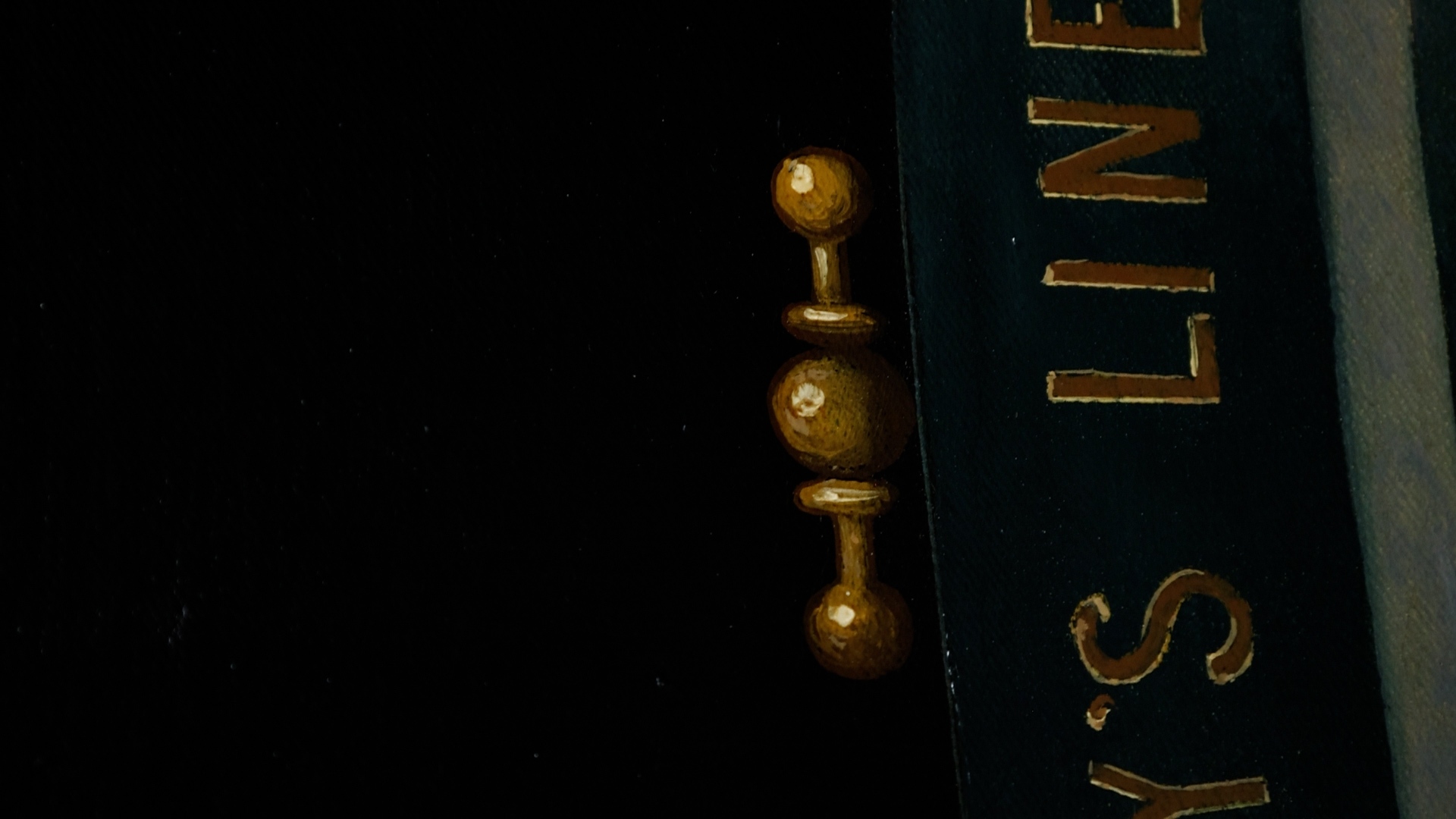
Or perhaps the circular orientation? Sure round paintings, or “tondos”, are less common, but they were also a format that the artist had already worked in.
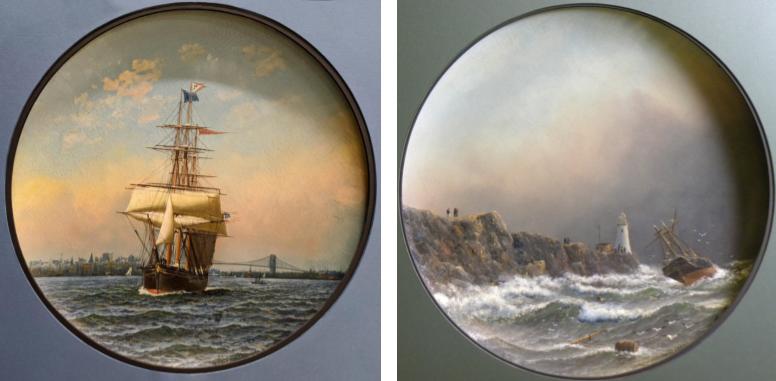
And this work, being on a rectangular canvas, doesn’t technically fit that classification. So again, what was it? Ultimately, I think it was a combination of all of these things as well as the jarring, mysterious black of the canvas that created a work that defied my expectations.
Revealing the Truth
So what is this, really? If we take a deeper look we can see that this is not a porthole at all, but actually the opening of a safe. And this safe was the logo of the Mallory Line, a fleet of commercial freight and passenger ships which ran between Galveston, Texas and New York.
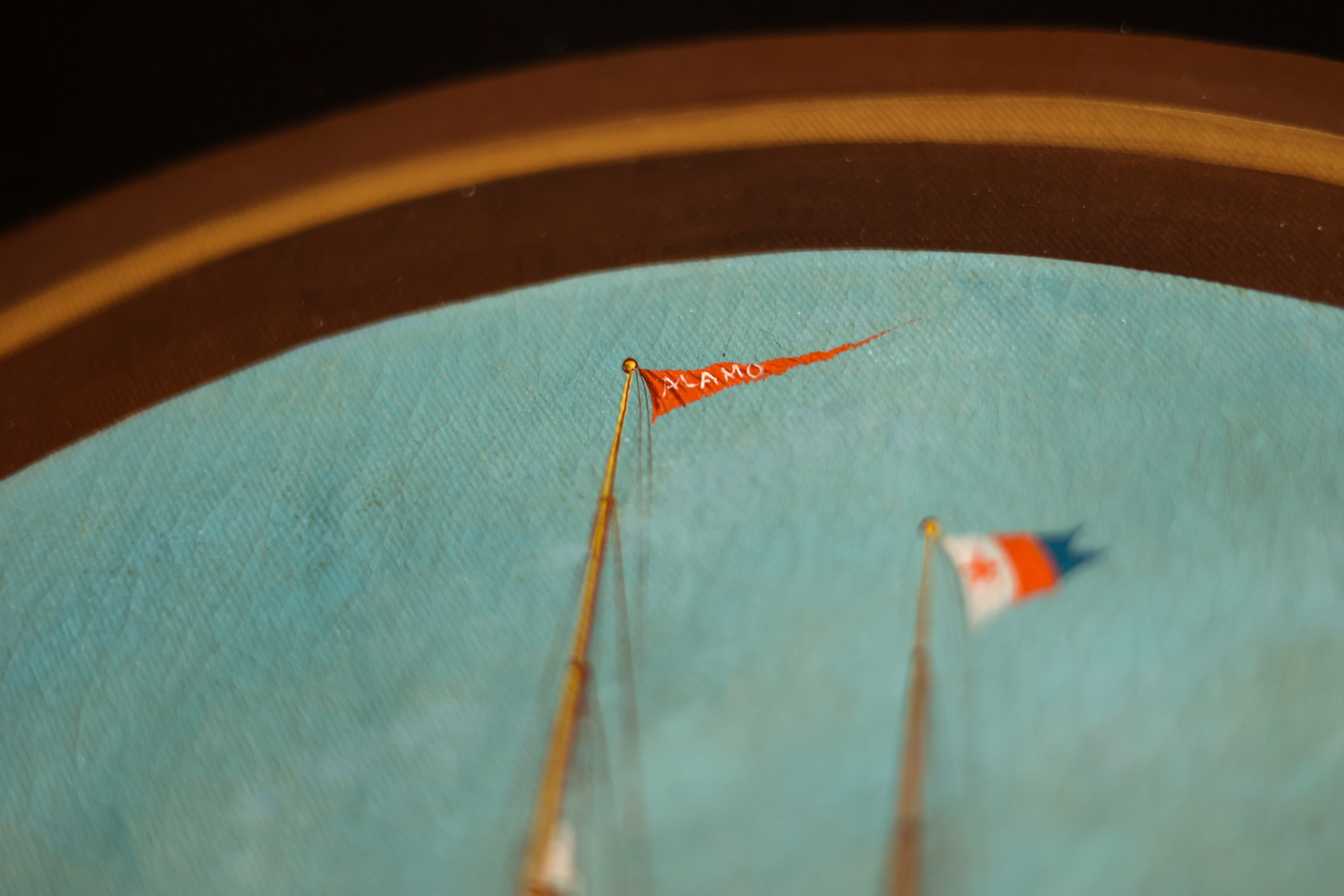
And this was their ship, S.S. Alamo, shown steaming proudly and gallantly. Jacobsen has presented it as faster and more technically advanced than other ships around it which are all shown under sail and deep in the background. This is something precious. Something worth keeping under guard and locking away in a safe- the vessel, the business, the people, and the cargo.
And perhaps that was the point, not just of this work but of ship portraits in general. They may be a genre that we’re quick to judge, but these paintings immortalize something precious, something worth remembering. In taking the time to look at this work from a new perspective and ask the questions, this work sheds its mystery and reveals its truth.
So what will you discover when you pause to let the door to this portal swing open and explore the world beyond?
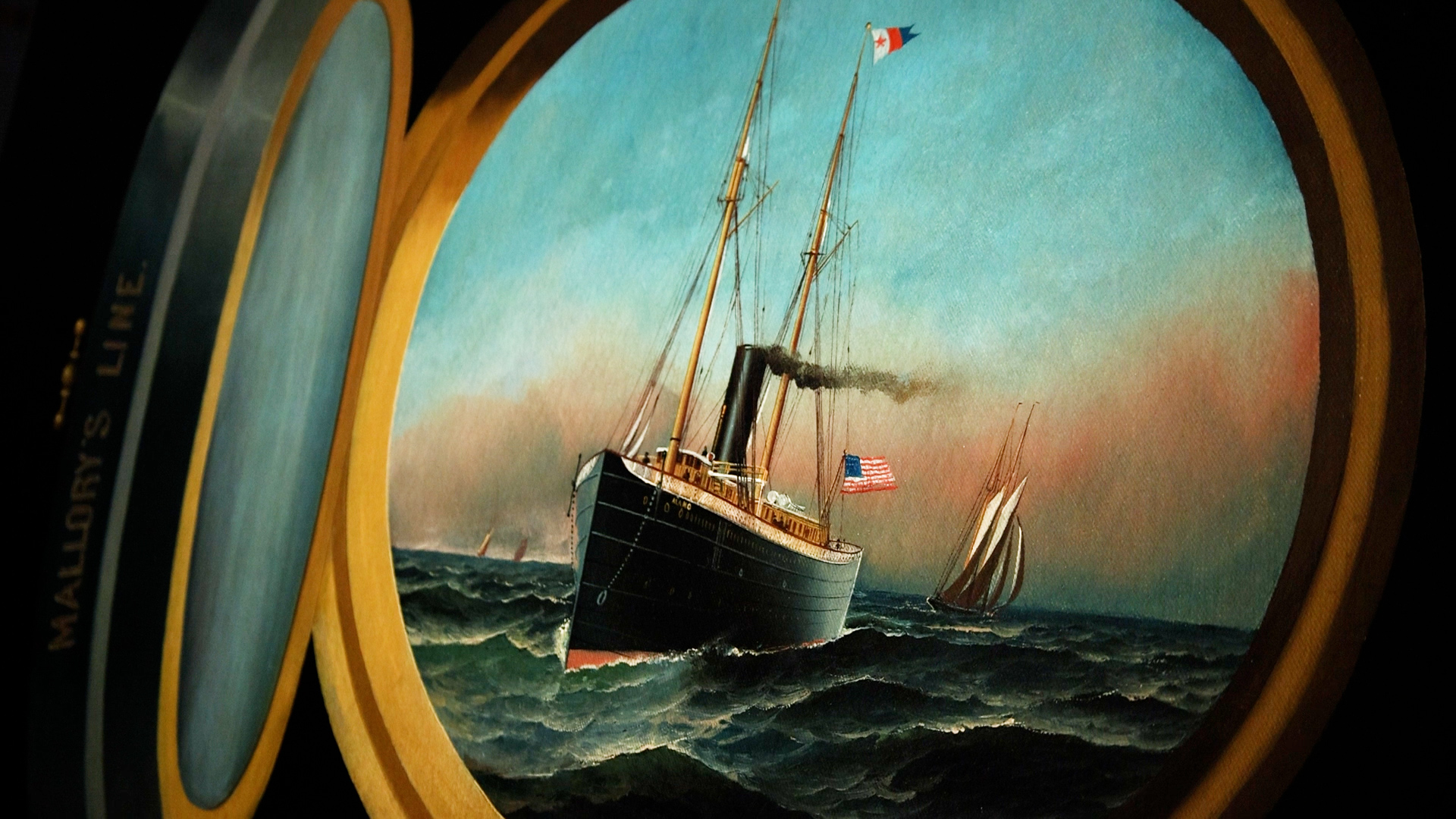
Be sure to watch the full episode here and stay tuned for new episodes the first Friday of each month!